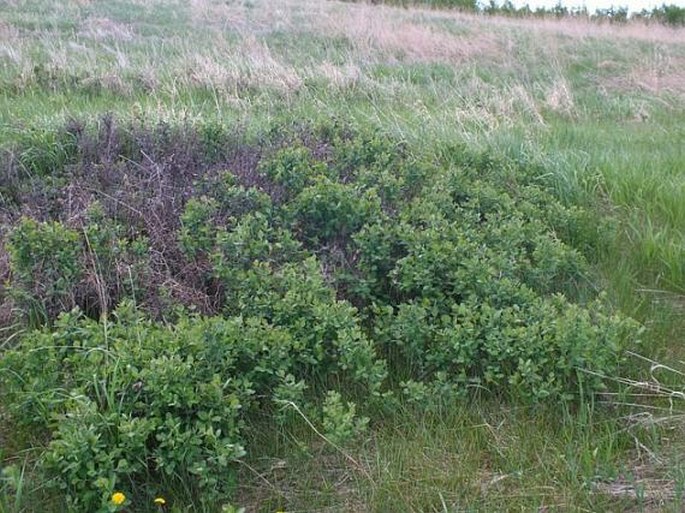Family: Caprifoliaceae Juss.

Distribution: North American species found from Northwest Territories through most of Canada with exception of Newfoundland and US mainly in Montana, Wyoming, Dakotas, Nebraska and marginally in Kansas, Minnesota, Michigan, Colorado, Washington, Idaho, New Mexico and Utah.
Ecology: Typical prairie plant, dry slopes and grasslands. Blooms in June and July.

Description: Low, erect shrub, 30–100 cm high, forming colonies from creeping rhizomes. Branches dark grey to copper coloured, shedding bark, twigs minutely hairy. Leaves opposite, deciduous, greyish green, 20–60 × 15–55 mm, somewhat leathery, elliptic to ovate, glabrous above, hairy or hairy along veins below, petioles 10 mm long, margins smooth to wavy. Some leaves persist through winter. Inflorescence is a crowded spike, terminal or axillary; flowers pinkish white, bell-shaped, flaring above to prominent spreading 5 lobes, 5–9 mm long, stamens with long filaments, yellow anthers, pale yellow stigma. Fruit is a berry, whitish green to purplish black, 8–10 mm, inedible, some persisting through winter.
Note: The Blackfoot tribe used the stems for production of arrow shafts.



These images were taken in Canada, Alberta, Calgary, Nosehill Park (2014).


